Why Nike consulted women first when it started designing new sneakers
EL PAÍS visited the LeBron James Innovation Center at Nike’s global headquarters in Oregon. Scientists and designers explain how they have placed the voices of female athletes at the center of their work
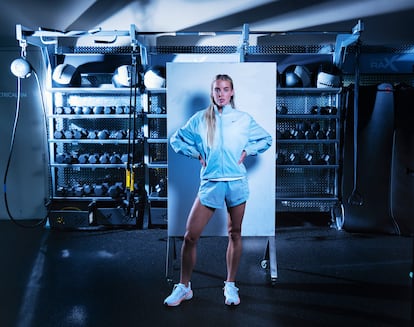
The world champion of the 100-meter dash — Sha’Carri Richardson — wears very long and colorful false nails in competitions. They are, surely, the most striking touch in the young Texan’s powerful look. Printed in 3D and then lacquered, the ones she wore last April in Paris — at a major event, in which Nike presented its innovations with a view to the Olympic Games this summer — had come from the same place as the sophisticated high-top sneakers that she wears while competing. That is, from the LeBron James Innovation Center, a spectacular building at Nike’s headquarters in Beaverton, Oregon. There, about 700 people work with all kinds of cutting-edge technology in the fields of materials, biomechanics, or artificial intelligence to create new products. “It’s not something superficial. We’re committed to the needs of our athletes, from head to toe and from performance to style,” explains Heidi O’Neill, one of the top managers of the American sports clothing and footwear giant.
Women’s sports are taking off. There are signs everywhere. In Spain, for example, the triumph of the national female soccer team has attracted global attention. In the United States, 18.7 million people watched the final game of the National Collegiate Athletic Association’s (NCAA) women’s March Madness basketball tournament… significantly more than usually watch the NBA finals. And, on the commercial side of things, campaigns starring female athletes are more effective than the rest (16% more in the case of Nike and 69% in the case of Adidas), according to the television audience analysis company EDO, which measures the impact of advertising from internet searches. “Companies are well aware of the growing potential of the [female] market and have strategically positioned themselves to capture this demand. I would say that this is due to both market forces and social expectations,” says Sam Chandrasekara, a researcher at the University of Manchester. She’s co-authoring a new book on global fashion brand management.
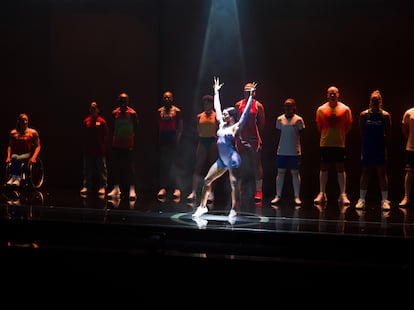
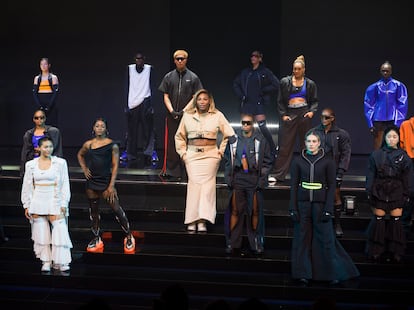
Indeed, the major sporting goods firms are positioning themselves, each one adopting a strategy in line with their personality and possibilities. Nike, certainly, has many possibilities. EL PAÍS has been able to verify this after attending (at the brand’s invitation) the great pre-Olympic event in Paris, as well as the multinational’s headquarters in Oregon. The company is proud of its history of supporting women, which includes promoting equality in university sports in the 1970s, supporting the first female Olympic marathon champion — Joan Benoit Samuelson — in the 1980s, as well as offering numerous sponsorships to women’s leagues and associations. However, it must be noted that Nike has also faced controversy due to its relationship with athletes. In 2019, the conglomerate changed its contractual policy with sponsored athletes regarding pregnancy, after complaints from sprinter Allyson Felix. There have also been serious accusations of sexism within Nike’s corporate structure.
“I like to think that Nike has always been there and that now, it’s going even further,” says O’Neill, president of Consumer, Product & Brand for the multinational. She talks about the women’s think tank created in 2022 to support female athletes, assuring EL PAÍS that they’ve doubled spending on “specific innovations for women in the last four years,” although she doesn’t offer specific figures. “And we’re just getting started. I think there’s still a lot of potential,” she adds, in the mansion that once housed the old stock exchange of Paris, where 40 elite athletes paraded in April while wearing the brand’s latest products.
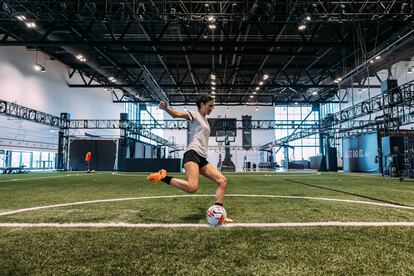

A couple of months later — more than 5,000 miles away, in Beaverton, Oregon — around 20 people were trying hard to explain what this effort means. In the middle of an idyllic forest landscape, EL PAÍS visited the LeBron James Innovation Center, one of more than 75 buildings spread across the 400 acres that Nike’s global headquarters occupies. Inside, a little less than four years ago, the brand brought together all the workers who, in one way or another, are dedicated to innovation.
The Sports Research Lab is on the top floor. This posed an engineering challenge, since the building includes — among other things — a basketball court and half of a soccer field, framed by an athletics track, which is dotted with sensors and surrounded by cameras that collect every little detail of the movements of the athletes who pass by there every day. Some of the attendees are professionals, while others are amateurs. Last year, there were about 4,000 visitors: 75% of them were women.
There, next to the training courts, Bridget Munro — the women’s research director at Nike — shows EL PAÍS the products that Nike puts out to compete in the increasingly competitive sports bra market, along with clothing items that are specially designed for use during menstruation and pregnancy.
Shortly before this stage of the visit, Dan Judelson — director of apparel research — presented Hal and Haley, animated male and female mannequins. They sweat non-stop in one of the climatic chambers, where the researchers study how the human body perspires in different conditions, such as cold, heat and humidity. There, Nike developed the Aerogami line runner jackets, whose strips of special material open with sweat and close when it dries up, so that there’s no need to fiddle with the zipper or take off the garment during a run. They’re placed a little lower on the women’s model.
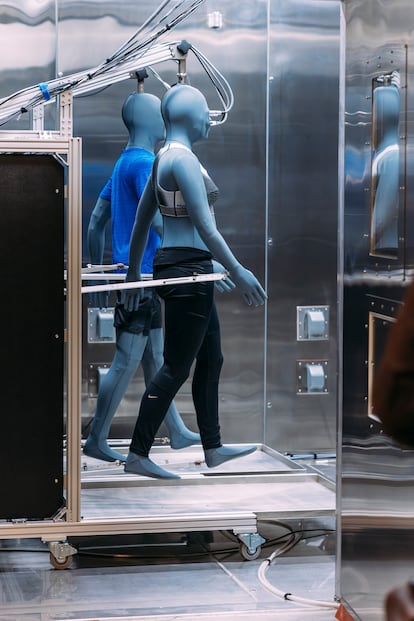
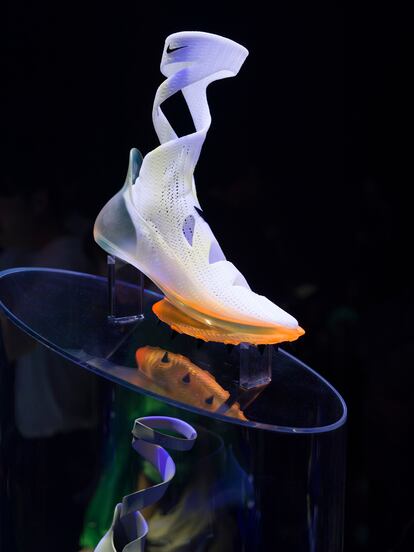
Beyond clothing, the brand’s most striking feminine twist is probably in the sneaker section. The day came when they broke with the idea of “if you create something for an elite male athlete, it will work for everyone,” explains Kathy Gomez, vice president of footwear innovation at Nike. “About four years ago, we decided that we were going to start all the projects with women. It’s not that we’re not going to test men or [try to] understand male athletes… just that we’re going to start with women. We’re going to spend more time with them and we’re going to do it from their perspective,” she explains.
For example, a few months ago, Nike launched the GT Hustle 3. The idea of this line was to transfer the advances made in running shoes to basketball, so that those wearing them could consume less energy. But instead of starting to build the model in a size 12 — the average for male athletes — they did it with sizes 8 and 9, the average for female basketball players. And, from there, “everything revolved around [female] mechanics, preferences and performance,” explains Elysia Davis, an expert researcher in biomechanics. Women were the ones who began testing the prototypes until they achieved a version that, as Davis emphasizes, consumes less energy.
Does that mean it’s a women’s shoe? How is it different from one for men?
“We make basketball shoes for all types of players, of all levels, both men and women,” Davis replies. “In this case, it was about starting with women, not comparing. It wasn’t about measuring some and then others and finding the difference. That’s how a lot of people approach women-specific products. We wanted to do it differently. I can’t give you a list of things that are different about them… I can only tell you that this shoe was optimized using the point of view of female athletes. In this case, once the innovation is made, we scale it and build the size 12 [for male athletes].”
Another example is when Nike’s researchers realized that some runners — especially women — were having problems adapting to the latest models of their super shoes. This was the model that shook the sporting world in 2016, when the firm switched out the classic narrow sole of running sneakers for another with a carbon plate and abundant reactive foam (something that triggered their umpteenth marketing battle with Adidas). Because of this discomfort, in the latest revision of Nike’s Alphafly 3, the team has re-attached the sole that they had left open behind the forefoot Zoom Air bags to increase performance. 120 female athletes who aspired to qualify for the most competitive Women’s Olympic Marathon Trials in history — members of Nike’s Project Dreamweave — actively participated in the testing of this shoe.
This program attempted to support a group of women as they worked towards the qualifying events for the Paris Olympic Games. 15 of the participants ultimately succeed. And, throughout the two years of the process, the brand collected all kinds of information about their biomechanical, physiological, psychosocial and self-perception needs during the more than 500,000 miles they ran in 70,000 training sessions.
Databases are another very powerful innovation tool for Nike. Baseline, for example, is a computer collection and analysis system of athletes’ basic data, including the shape and size of their feet, how they step, how they walk and how they run. Baseline has already stored the information of about 3,000 people. “This [system] is our fundamental understanding of athletes. It’s our starting point,” explains Jackie Shea, head of the Baseline program.
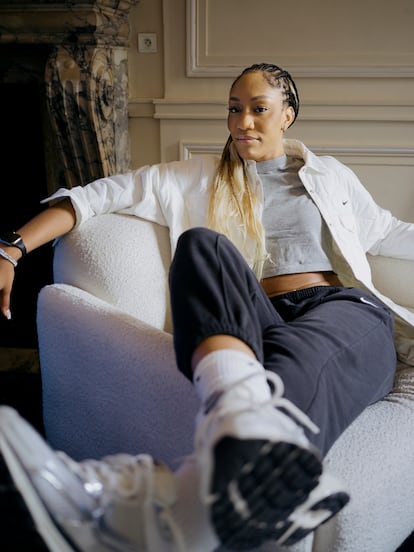

“The Nike team always starts any conversation by asking me questions about my specific needs as an athlete to better understand them,” explains British athlete Keely Hodgkinson. She’s the European champion and Olympic runner-up in the 800-meter dash. Professional basketball player A’ja Wilson — a power forward for the Las Vegas Aces — talks about the push and pull of the testing process: “I’m a low-top sneaker girl, so if they bring me high-top [shoes], I have to say no. It’s not easy to say no to Nike, but at the same time, it’s what they expect from you. They want us to give honest opinions and that’s what I love.”
Wilson will launch her own exclusive line of Nike footwear next year. Hodgkinson, meanwhile, has collaborated in the creation of the Air Zoom Victory 2 and Air Zoom Maxfly 2 and in the design of the cut and fit of the jerseys worn in competition.
Precisely, the uniform of the American women’s team for the Paris Games caused controversy when it was presented in the French capital. According to its detractors, it’s a tiny garment that excessively sexualizes athletes. The brand responded by clarifying that the model they displayed at the event is one of nearly 50 that they offer. “Our collection includes a dozen competition styles fine-tuned for specific events to ensure athletes can choose outfits that match their style and personal preference without sacrificing comfort,” said Jordana Katcher, Nike’s vice president of global sports apparel, in an email to Fashionista.
When asked about her esthetic preferences, Hodgkinson responds: “I like to do my hair and makeup myself, but, for example, I used Nike’s athlete services at the 2023 [Prefontaine] Classic to do my hair and makeup. They also included accessories and jewelry. I love the platform I have as an athlete when I compete, so I always want to look and feel my best.”
“Look good, feel good, play well” is a phrase repeated by several of the Nike executives and employees who have spoken with EL PAÍS in recent months. Heidi O’Neill — president of Consumer, Product & Brand — says that it refers to taking into account absolutely everything that can make a difference for the athletes. “Her appearance and her presence are part of her confidence in that race, in that game, in that moment…”
Sign up for our weekly newsletter to get more English-language news coverage from EL PAÍS USA Edition
Tu suscripción se está usando en otro dispositivo
¿Quieres añadir otro usuario a tu suscripción?
Si continúas leyendo en este dispositivo, no se podrá leer en el otro.
FlechaTu suscripción se está usando en otro dispositivo y solo puedes acceder a EL PAÍS desde un dispositivo a la vez.
Si quieres compartir tu cuenta, cambia tu suscripción a la modalidad Premium, así podrás añadir otro usuario. Cada uno accederá con su propia cuenta de email, lo que os permitirá personalizar vuestra experiencia en EL PAÍS.
¿Tienes una suscripción de empresa? Accede aquí para contratar más cuentas.
En el caso de no saber quién está usando tu cuenta, te recomendamos cambiar tu contraseña aquí.
Si decides continuar compartiendo tu cuenta, este mensaje se mostrará en tu dispositivo y en el de la otra persona que está usando tu cuenta de forma indefinida, afectando a tu experiencia de lectura. Puedes consultar aquí los términos y condiciones de la suscripción digital.
More information
Archived In
Últimas noticias
Welcome to the post-religion era: The idea of Christianity as the absolute truth has become obsolete
‘I thought you would like it’: The risky sexual practice popularized by TV shows and TikTok
The digitalization of tourism: ‘They promise experiences and gave us the worst possible one’
Mexican peso defies uncertainty with forecasts of a new period of stability in 2026
Most viewed
- Sinaloa Cartel war is taking its toll on Los Chapitos
- Reinhard Genzel, Nobel laureate in physics: ‘One-minute videos will never give you the truth’
- Oona Chaplin: ‘I told James Cameron that I was living in a treehouse and starting a permaculture project with a friend’
- Why the price of coffee has skyrocketed: from Brazilian plantations to specialty coffee houses
- Silver prices are going crazy: This is what’s fueling the rally











































